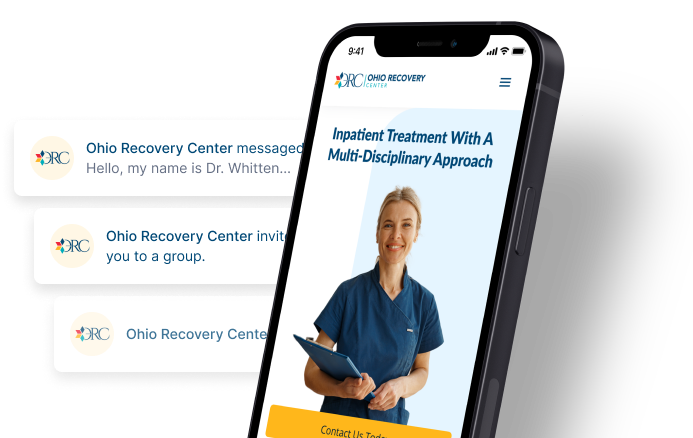Opana (Oxymorphone) Overdose | Signs, Risks, & Treatment

Medically Reviewed By: Manish Mishra, MBBS
Opana overdose signs include difficulty breathing, extreme drowsiness, and loss of consciousness. Overdose risk increases if you mix Opana with other drugs or take too much. Naloxone can temporarily reverse an opioid overdose, but you’ll likely need follow-up care.

Opana is a brand name for oxymorphone, an opioid analgesic prescribed to relieve moderate to severe pain. It should only be prescribed when other, non-opioid painkillers have been ineffective.
In 2020, there were 16,416 known overdose deaths in the US involving prescription opioid drugs. In the same year in Ohio, 4,308 people died of overdoses involving opioids. And many more people overdosed and survived, seeking medical attention in time.
Knowing the signs and risks of oxymorphone overdose might keep you or a loved one alive.
Opana (Oxymorphone) Overdose Signs
The most severe effect of an opioid overdose is respiratory depression. This condition is marked by slow, shallow, or irregular breathing.
As a central nervous system depressant, Opana slows down your heartbeat and breathing rate. Too much Opana can slow these vital functions so much your body begins to shut down. Without proper oxygen flow, you may develop brain damage, lose consciousness, or go into a coma.
Signs of an Opana overdose may include:
- difficulty breathing
- blue- or purple-colored skin, lips, or nails
- cold, clammy skin
- pinpoint pupils
- extreme drowsiness or sedation
- muscle weakness or limpness
- low blood pressure
- slow heart rate
- nonresponsiveness
The same symptoms occur with an overdose on any opioid, such as hydrocodone (Vicodin), oxycodone (OxyContin), or hydromorphone (Dilaudid).
Opana (Oxymorphone) Overdose Risk
If you aren’t used to taking opioids, you can easily overdose on Opana. It’s vital to follow your prescription. Your doctor should closely monitor your dose until they know how Opana will affect you.
Keep your prescription out of reach of children, too. They are unused to opioids, and their bodies may not be able to handle the prescription drug like an adult.
Other factors that increase overdose risk are:
- taking too much Opana
- mixing Opana with other drugs
- some medical conditions
- snorting or injecting Opana
- Opana addiction relapse
Taking Too Much Opana
Too much Opana is more than prescribed, whether you use higher doses, take it more frequently, or stay on it longer than recommended.
You can overdose by taking too much Opana at once in a large dose. But it can also build up in your system if you take overlapping doses (another dose before the last has worn off). If you take it often enough, your risk of overdose keeps going up.
Mixing Opana With Other Drugs
Mixing opioids with other central nervous system depressants isn’t safe because it increases the chances of respiratory depression. Combining Opana with other opioids, benzodiazepines, or alcohol raises overdose risk.
Some Medical Conditions
Certain medical conditions make it more likely that you’ll overdose on Opana. These conditions include human immunodeficiency virus (HIV), sleep apnea, liver disease, and lung disease.
If your body is weakened by a medical condition, it may not be able to process drugs effectively. The chances of overdose are higher when your immune system is compromised.
Snorting Or Injecting Opana
Snorting or injecting an opioid takes it directly into your bloodstream. These modes of intake produce a quicker, more intense high than swallowing an Opana (oxymorphone) pill. They also make overdose more likely.
When you take a pill, it travels through your digestive system before being safely distributed throughout your body. It’s formulated to enter your system at a specific rate. Messing with how you take it can cause serious problems in your body.
Opana is available in immediate-release (IR) and extended-release (ER) formulations.
The extended-release tablets are most dangerous if you snort or inject them. They contain a much larger dose than Opana IR that’s supposed to enter your system gradually for a 12-hour period—not all at once.
Opana Addiction Relapse
Opioids cause physical dependence, so your body responds adversely if you stop using them. Opana withdrawal symptoms drive many people to relapse during the recovery process.
If you are weaning off opioids or haven’t used them in a while, your body adjusts to a lower dose. Relapsing and resuming opioid use at the dose you used to take can cause a life-threatening overdose.
Some addiction treatment centers in Ohio provide medication-assisted treatment (MAT) to ease the withdrawal syndrome so you can focus on recovery. MAT may include opiate medications like methadone or buprenorphine that partially activate opioid receptors and decrease cravings.
Treatment For An Opana (Oxymorphone) Overdose
If you suspect someone has overdosed on Opana (oxymorphone), call 911 immediately. Then administer naloxone (Narcan), if available.
Naloxone is an opioid antagonist that temporarily reverses the symptoms of opioid overdose. It gives you a little time for medical help to arrive and can save someone’s life.
If you’re taking opioids legally or illegally, it’s a good idea to have naloxone on hand. It’s available over the counter at many major pharmacies across the Ohio.
The Centers for Disease Control and Prevention (CDC) recommend that once you administer naloxone to someone, try CPR (if you’re trained) to restart their breathing.
Many states have Good Samaritan laws that protect you if you’re helping someone through a drug overdose. Ohio gives immunity for minor drug possession if the drugs are found as a result of you calling 911. Don’t let fear of getting in trouble keep you from saving a life.
Once the person who has overdosed is taken to the emergency department, medical professionals may:
- use activated charcoal to absorb toxins
- administer IV fluids
- do a gastric lavage (stomach pump)
- monitor them closely to keep them stable
What actually happens in the emergency room depends on your unique situation, medical history, and drug consumption.
Opana (Oxymorphone) Overdose Follow-Up
An Opana (oxymorphone) overdose is a traumatic experience. Strong support from family and friends can help you heal, but follow-up care via mental health services may be necessary.
These services might involve counseling or community programs through:
- peer support groups
- faith-based organizations
- healthcare providers
- neighborhood groups
- government agencies
- educational institutions
If the overdose occurred because of unmanageable pain, you may need to see a specialist who can offer an alternative to opioid treatment. If it was the result of opioid addiction, a drug rehab program is an invaluable step toward a healthier life.
At Ohio Recovery Center, we provide customized recovery programs. No matter where you are with opioid addiction, we can help. Contact us today to learn about treatment options and overdose follow-up care.
- Centers for Disease Control and Prevention — Responding to a suspected opioid overdose https://www.cdc.gov/niosh/topics/opioids/response.html#:~:text=Administer%20naloxone&text=Naloxone%20effects%20are%20temporary.,unconscious%20or%20stop%20breathing%20again.
- National Institute of Health — Overdose Death Rates https://nida.nih.gov/research-topics/trends-statistics/overdose-death-rates
- Ohio Department of Health — Good Samaritan Law https://odh.ohio.gov/know-our-programs/oh-against-od/good-samaritan-law/call-no-matter-what#:~:text=Ohio's%20Good%20Samaritan%20Law%20provides,for%20treatment%20within%2030%20days.
- Substance Abuse and Mental Health Services Administration — Opioid Overdose Prevention Toolkit https://store.samhsa.gov/sites/default/files/d7/priv/recovering-from-opioid-overdose.pdf
- World Health Organization — Opioid Overdose https://www.who.int/news-room/fact-sheets/detail/opioid-overdose

